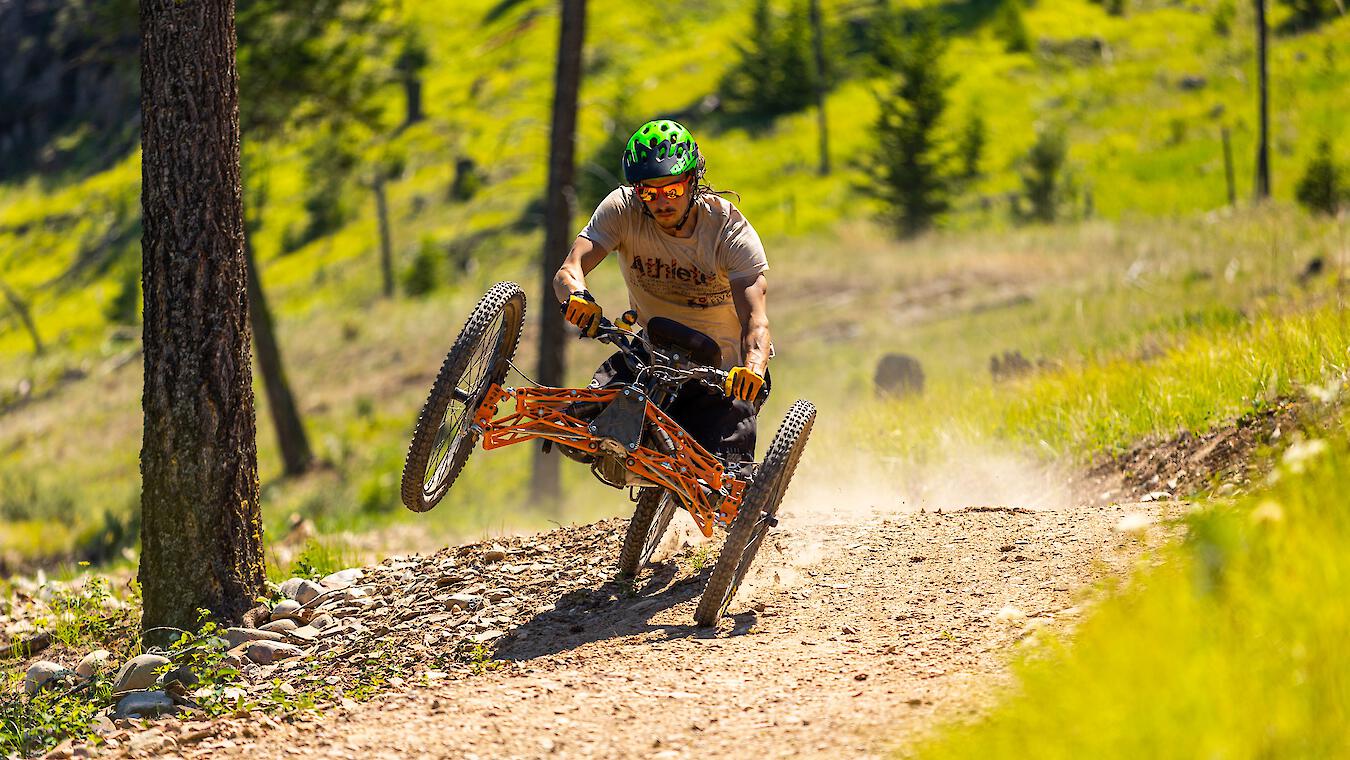
Long-term Attitude - Why Building Adaptive Trails is Good for Every Rider
Hertz So Good, Amps Go Marching, and John Travoltage. The electric wordplay in these names speaks to the unique design ethos of the newest mountain bike trails in Kimberley, B.C. They are some of the first anywhere built specifically for electric mountain bikes, including battery-powered adaptive bikes for riders with physical disabilities.
The new trails are a pioneering first for e-mountain biking. But it’s an even more important development for the accessible biking movement, says Mike Riediger, the CEO of Kootenay Adaptive Sport Association, which provides opportunities for physically disabled people to get into the outdoors including on bikes.
“Our primary focus is persons with visible disabilities,” Riediger says. “But where the biggest wins come in are for the much wider community of cyclists or potential cyclists. People with invisible or temporary disabilities, children, active elderly, people aging out of mountain biking, families and more.”

The first adaptive mountain bike trails only appeared in the province in the last decade. These were mostly downhills built extra wide to accommodate the three and four-wheeled adaptive mountain bikes, aka aMTB. Five years ago maybe three mountain bike clubs had built adaptive trails, says Riediger. Today there are at least twice as many, including trails in Revelstoke, Nakusp, North Vancouver, Fernie, Golden, and Nipika, a resort in the Canadian Rockies east of Radium. Plus the machine-built flow trails, found in just about every trail network, often double as adaptive friendly.
But all required riders to get themselves to the top of the trail, a significant barrier for many disabled people. Technology is helping overcome the uphills. Adaptive bike manufacturers are adopting the electric-assist and fully electric engines developed for the mass bike market.

“Electric assist is essential to the growth of the sport and recreation,” says Riediger. “Without it, we make access incredibly difficult for many people on two, three or more wheels.”
Kimberley is one of the first communities to focus on the electric riding community, says Kevin Pennock, the executive director of KORE Outdoors, an outdoor gear manufacturing accelerator based in the east Kootenay town.
“Interest in electric recreation is exploding,” says Pennock. “But no one has really studied the potential and there’s not a lot being developed specifically to serve these users.”
KORE partnered with the Kimberley Trails Society, Tourism Kimberley and Sustainable Kimberley to develop the Electrify the Mountain project. It included a covered and secure electric bike charging station, accessible washrooms and new and refurbished trails. With $851,522 of provincial COVID tourism recovery funding, most of the project was completed in 2022.

Brady Starr, owner of Starr Trail Solutions, won the contract to renovate more than 20 kilometres of existing trail and build 12 kilometres of new trail. He worked with Riediger to adapt the trail-building standards for electric power and adaptive riders. Corners are wider to accommodate the larger turning radius of adaptive bikes and heavier electric rigs. They are gentler too: some adaptive riders don't have the upper body strength to handle high G-forces. The climbs are longer and more sustained because electric engines don’t need to catch their breath. And rather than finish the trail to the smooth polish of most adaptive trails, Starr left them a little rawer.
“We could be more creative because they can power over stuff,” Starr says. “It was a really unique and rewarding project.”
The new trails are also popular with able-bodied mountain bikers, says Ryan McKenzie, the general manager of the Kimberley Trails Society.
“Both the seasoned e-bikers and acoustic bike riders are already loving the new loops,” he says. “For the first time, we saw young families out riding the trails together. We have also heard from a few adaptive riders as well who are planning trips and some well-known riders planning adaptive mountain bike camps in the area.”
The real value for the wider riding public will come down the road, says Riediger.
“We live in the now,” he says. “But given enough time, we will all live with a disability of some sort. Don’t we all want to keep riding as long as possible?”

